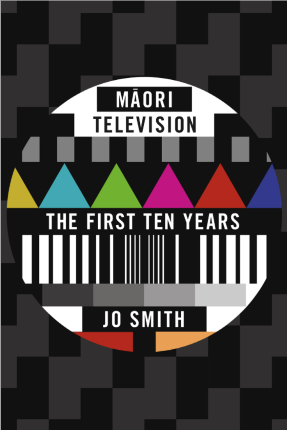
Māori Television: The First Ten Years—Jo Smith (2016)

This book explores the power of the media in shoring up a sense of self and collective identity.
Publication details
Smith, J. Māori Television: The First Ten Years. Auckland: Auckland University Press, 2016.
About the book
“One cannot understand the impact and significance of Māori Television without understanding the longer history of Indigenous struggle in this country.” This is the electric opening to Jo Smith’s Māori Television: The First Ten Years (2016) an inciteful publication that examines the power the media plays in shoring up a sense of self and collective identity. This publication chronicles the first decade of Māori Television, launched in 2004 after years of protest, agitation and court hearings. Smith (Waitaha, Kati Mamoe, Kai Tāhu); a senior lecturer in English, Film, Theatre and Media Studies at Victoria University, explores the complex dynamics underpinning state-funded Māori media through interviews with key stakeholders. Arguing that Māori Television must be understood within a broader context shaped by non-Māori interests, Smith asks pointed questions about the role of Māori media such as; If language is the cornerstone of a people’s way of being, and if that language is not heard daily through media outlets and in everyday conversation, how can a people thrive? If the perspectives shown on television, heard on radio and filtered through feature films are resoundingly non-Māori, what does this do to the status of te reo and the many different values, norms and practices embedded in the language that help constitute diverse Māori worlds? In response to such questioning, Smith offers five unique frameworks through which to understand Māori Television and gain insight into the challenges and opportunities faced by Māori media in New Zealand today.
Further information
This publication is part of the series Te Takarangi: Celebrating Māori publications - a sample list of 150 non-fiction books produced by a partnership between Royal Society Te Apārangi and Ngā Pae o te Māramatanga.
